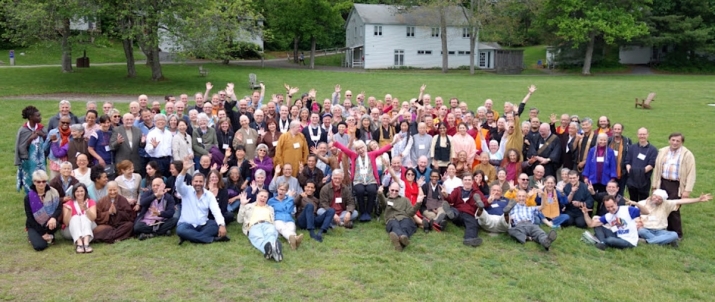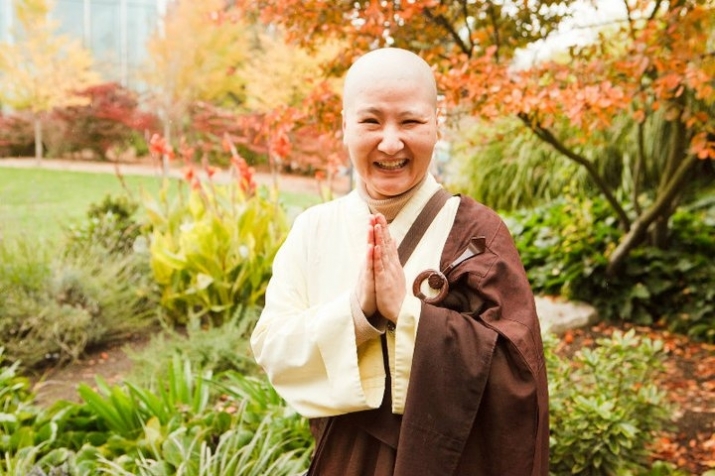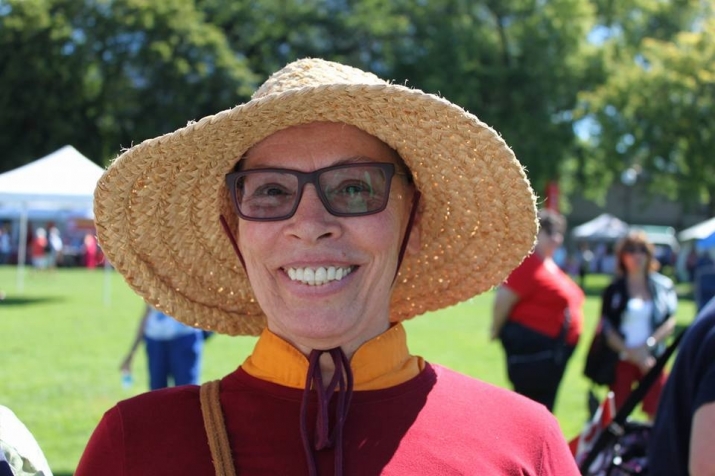FEATURES|COLUMNS|Western Dharma
The North American Buddhist Alliance: Seeking Togetherness in Diversity
 Members of the North American Buddhist Alliance. From northamericanbuddhistalliance.org
Members of the North American Buddhist Alliance. From northamericanbuddhistalliance.orgSeeking to make sense of Buddhism in North America quickly leads one on an exciting yet complex journey. Buddhism here carries with it 2,500 years of history and countless roads traveled. In its long transmission, the Buddha’s teachings spread from northeast India and through many varied Asian countries and cultures before arriving in, say, northeast Montana.
Writing of Buddhism in Asia in their book Westward Dharma, Charles Prebish and Martin Baumann note that it took centuries for acculturated, regionalized forms of Buddhism to develop, e.g. Pure Land, Tientai, and Chan in China, and analogous developments later in Japan. However, the spread of Buddhism to North America has coincided with a boom in global communications and travel, allowing for the faster development of what might be identifiable as a distinct type of Buddhism here.
To many people in North America, Buddhism arrived with the hippies of the 1960s, or perhaps earlier with the Beat poets and writers of the 1950s. However, this is historically inaccurate. Buddhism arrived many decades before in the lives and practices of immigrants from China, Japan, and other Asian countries. But the racism of early Caucasian Americans stood as an enduring barrier to any meaningful understanding or exchanges of ideas.
What developed in the aftermath of the fascinations with Buddhism of the Beat and hippy generations was described by Charles Prebish as “two Buddhisms;” one focused on nurturing Asian immigrants and one on connecting with mostly white (but others as well) seekers. Remarking on the development of these two Buddhisms, Larry Yang, a Theravadin meditation teacher, noted:
Ironically, identity-based retreats were long in the making because when the teachers of the European-American mainstream sangha came back from Asia to teach, they didn’t go to the existing Asian temples or venues that were already in North America. They started the mainstream centers we know today because they didn’t see themselves reflected in these Asian temples.
 Venerable Guo Cheen. From Venerable Guo Cheen Facebook
Venerable Guo Cheen. From Venerable Guo Cheen FacebookAnd so the separation remained. Yet, over time, it also began to disappear. As Asian-American experiences changed, so too have many of their sanghas, reaching out more and more successfully to often resistant and still racist neighbors. Harvard scholar of religions Diana Eck recounts the complex history of one such community—Hsi Lai Temple in Los Angeles—in her book A New Religious America: How a “Christian Country" Has Become the World’s Most Religiously Diverse Nation. There, Taiwanese monastics and lay Buddhists have spent years painstakingly winning over their suspicious and unwelcoming neighbors, becoming, at last, a beautiful part of the city’s religious landscape.
In order to find out more about North American Buddhism today, I reached out to Ven. Guo Cheen, one of the founders of the North American Buddhist Alliance (NABA). When asked about what North American Buddhism is, her answer was succinct and clear: “I don’t know what North American Buddhism is. I am only willing to claim that the NABA nurtures relationships among Buddhists and Buddhist groups on the large landmass of North America, where the teachings of the Buddha are evolving to suit the needs of the people here.”
Meanwhile, Ven. Gawa Khandro, leader of Gawa Ling, a Tibetan Buddhist center in British Columbia, Canada, and an active participant in NABA conversations, elaborated on this by saying:
North American Buddhism seems to defy all attempts to pin it down to a tidy definition or to contain it in a simple capsule. It appears to be a vibrant, ever-growing amalgam of traditions, lineages, focuses, and diverse practices. Perhaps it is that appearance of expansive, lively potential, and promise of inclusiveness that attracts North Americans to the Buddha’s ancient wisdom teachings and the practices that have evolved over 2,500 years around those teachings. And, as with all enduring systems—whether manmade or in the natural world—change and adaptation have marked the survival of the most robust. The freshness that North American cultural sensibilities bring to Buddhism appeals to Westerners’ individuality and self-determination.
Ven. Guo Cheen and others founded the NABA to act as a common information hub for Buddhists in North America, and perhaps as a place where common statements about particular issues or calls to action could be posted and disseminated. Today the alliance hosts a growing group directory along with news and events pages for Buddhists in the region to share updates and keep in touch. Discussing the founding of the NABA, Ven. Guo Cheen writes:
Approximately eight years ago, I saw that there was no Buddhist network for Americans or North Americans, whereas most Buddhist regions and countries do [have one]. Buddhists sometimes need a united presence in the US and Canada, which was missing. It’s also worth mentioning that the North American Buddhist Alliance does not wish to be a governing body of elite monks that’s more typical of overarching Buddhist networks in Asia’s history. The NABA aims to foster Buddhist involvement and interaction at the root level and organically. The NABA took its time to brew, as it was not until conditions became ripe for its emergence that the NABA was born at the 2014 International Dharma Teachers’ Gathering.
 Ven. Gawa Khandro. From Unitarian Universalist Fellowship of Kamloops Facebook
Ven. Gawa Khandro. From Unitarian Universalist Fellowship of Kamloops FacebookThis year, the NABA has hosted a number of web-based calls in which members got to know one another and could discuss a particular topic. Two calls were scheduled for 18 May and 25 May from 5–7pm Pacific Daylight Time to discuss the topic of racial justice. The first one for White Buddhists and the second for People of Color (POC).
The initiative on racial justice stems from the 2015 meeting of Buddhists at the White House. In the wake of that meeting, a burgeoning organization called Buddhists for Racial Justice was formed. This year, that group officially became part of the NABA, which pledges to continue their work by developing:
1. Buddhist teachings for individuals to selectively apply as each addresses that discriminating nature within and according to one’s relative social position within the context of structural racism.
2. A directory of Buddhist diversity trainers available and a collection of educational multimedia modules such as the NABA’s recent video recordings of the teachers’ webinar on Gender and Race in a New Era with Venerable Pannavati and Venerable Lekshe Tsomo.
3. A repository sharing collective Buddhist initiatives or actions meant to be antidotes for systemic or structural racism.
“We aim to foster supportive networks, encourage inclusive and equitable collaboration, communication, and interaction among Buddhists and Buddhist groups. We publicize, sponsor, or coordinate initiatives and activities of interest through the NABA's interactive website and NABA News,” Ven. Guo Cheen concluded. As opposed to the American motto, e pluribus unum, (out of many, one), the motto of the North American Buddhist Alliance might be e diversitas convictioni, (out of diversity, togetherness).
References
Prebish, Charles and Martin Baumann. 2002. Westward Dharma: Buddhism Beyond Asia. Berkley: University of California Press.
Eck, Diana. 2001. A New Religious America: How a “Christian Country” Has Become the World’s Most Religiously Diverse Nation. New York: HarperSanFrancisco.
Yang, L. 2011. “Why is American Buddhism So White?” Buddhadharma, winter 2011, pp 46–55.
See more
Exploring a New Buddhist America (Patheos)
One Goal, Two Calls: Engaging Buddhists across North America on Racial Justice (North American Buddhist Alliance)
Related features from Buddhistdoor Global
The Compassion of Guanyin in Carmel, New York
Life in America as a Chinese Buddhist Monastic: An Interview with Venerable Guan Zhen
The Trump Presidency and Lessons I Refuse to Learn














